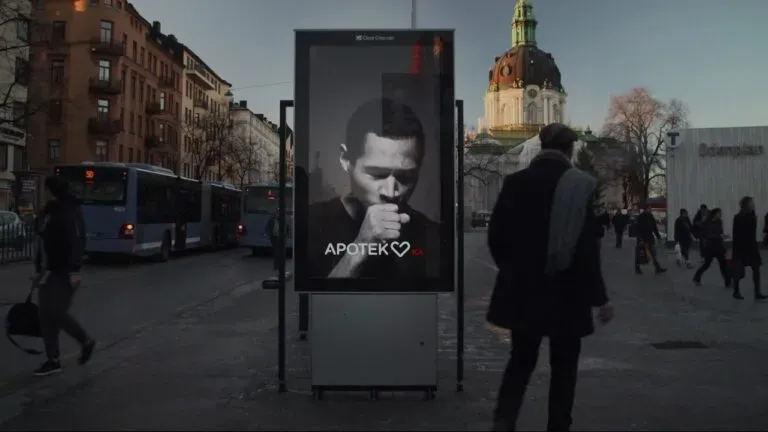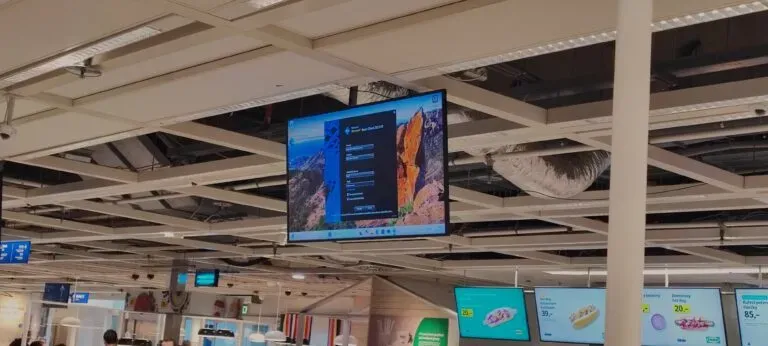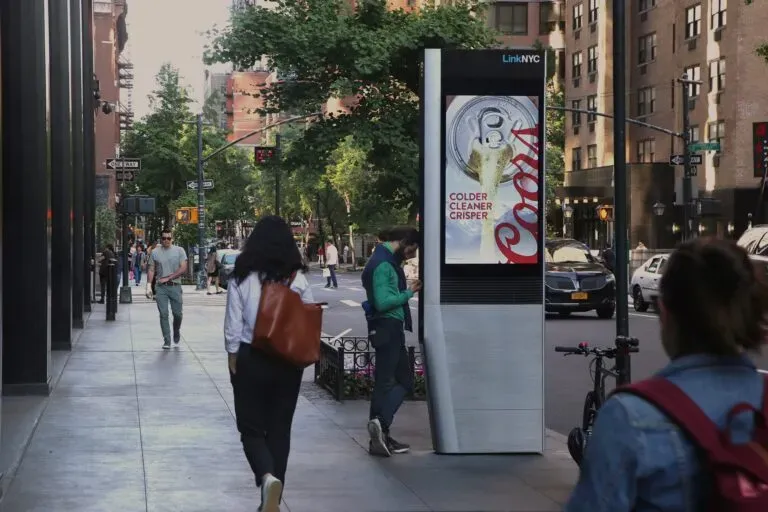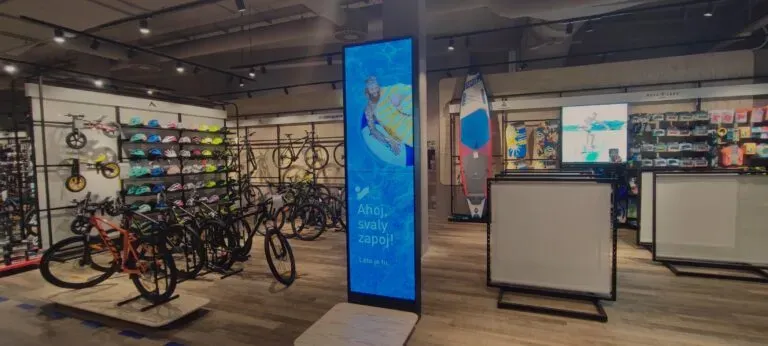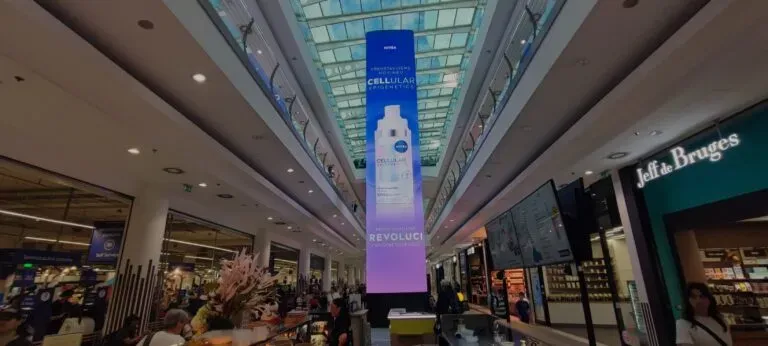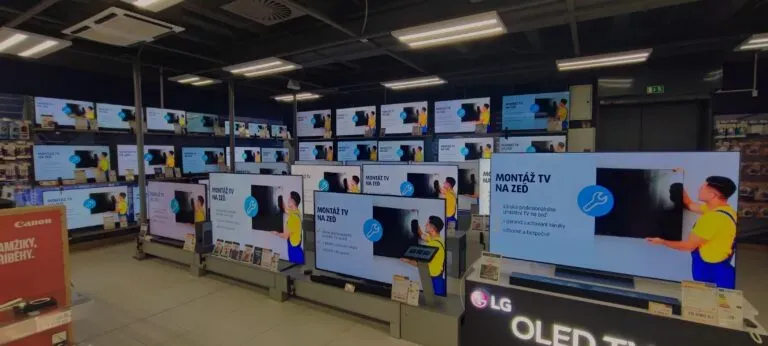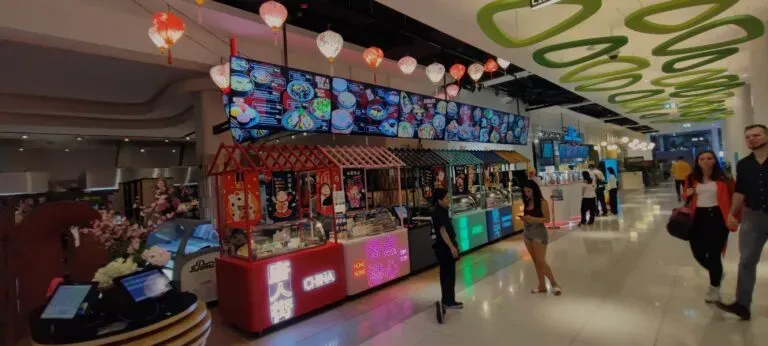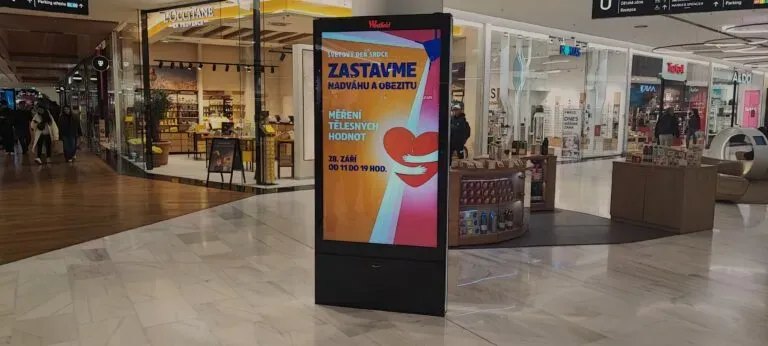How the right location for DOOH advertising increases campaign effectiveness by 70%
DOOH: Audience traffic movement data is the most important factor when placing outdoor advertising.
Stop guessing traffic — invest in conversions
In a world where information noise is at its maximum, attracting consumer attention is a real challenge. This is especially true for outdoor advertising, where every second of contact with the audience is worth its weight in gold. If you still choose a place for a billboard based on the principle “there are a lot of cars here,” it’s worth reconsidering your approach. Spending your budget on intuitive choices is risky. Modern DOOH (Digital Out-of-Home) and pDOOH (programmatic Digital Out-of-Home) tools, as well as software for video walls and digital signage players, allow you to make outdoor advertising measurable, effective, and personalized.
The new reality of outdoor advertising in 2025
The era of “the busiest intersection” is in the past. The effectiveness of OOH and digital advertising is determined not only by the number of potential contacts (OTS), but also by the quality of the audience, the relevance of the context, and the ability to integrate into the phygital space (the combination of physical and digital experience). Modern digital signs and video walls, controlled by specialized software, allow you to adapt content to the audience in real time, taking into account behavioral patterns and geoanalytics.
Why location choice is critically important
The cost of outdoor advertising placement is rising, and “banner blindness” is becoming more and more common. Consumers have learned to ignore visual noise, so the price of a mistake when choosing a location is very high. Unsuccessful placement is not only a lost opportunity, but also direct losses for the business.
The solution is to move from intuition to a strategy based on data. Using software solutions for video walls, digital signs, and DOOH platforms allows you to analyze traffic, determine audience relevance, and optimize ad placement. A correctly chosen location for advertising placement increases campaign effectiveness by 70%.
Three pillars of choosing the ideal location
1. Clear business goals and KPIs
Before analyzing agency price lists or opening a map, define the main goal of the campaign. Without a clear understanding of objectives, even the best technology will not bring results.
2. Multi-layered geoanalytics
Modern DOOH and pDOOH solutions allow you to collect data on people’s movements, their demographic characteristics, and behavioral patterns. Software for digital signs and video walls helps adapt content for different audience segments, taking into account the time of day, days of the week, and even weather conditions.
3. Deep understanding of target audience behavior
Studying the routes, habits, and motivations of potential clients allows you to place advertising exactly where it will be most relevant. Using digital signage players and video wall software makes it possible to change content in real time, test different approaches, and increase campaign effectiveness.
Foundation: goals, KPIs, and audience profile
The first step is to clearly define what exactly you want to achieve from the campaign:
Reach and brand awareness: The task is to introduce the brand to as many relevant people as possible. Here, broad but high-quality reach is important, which is provided by digital signage and DOOH screens in high-traffic locations.
Driving footfall to the point of sale: The goal is to convert an advertising contact into a physical visit to a store, café, or office. Video wall software allows you to track visitor flow and optimize ad placement for maximum impact.
Supporting online campaigns (O2O — Online-to-Offline): Outdoor advertising acts as a powerful trigger, reminding users of a brand they’ve already seen online and motivating them to take offline action. With pDOOH, it’s possible to integrate online activity data and personalize content on digital signage.
Event or promotion announcement: Here, precise targeting and timing are crucial. Digital signage players allow you to schedule content, delivering messages to the right audience at the right moment.
Game-changing technologies
Modern software solutions for video walls and digital signage offer:
1. Flexible content management
The ability to change content in real time, schedule displays, integrate interactive elements, and collect analytics on audience interaction.
2. Remote administration
Digital signage players support centralized management, enabling information updates simultaneously on dozens of screens in different cities.
3. Integration with analytics platforms
DOOH and pDOOH solutions enable the collection of consumer behavior data, real-time strategy adjustments, and increased advertising campaign ROI.
KPIs for 2025: what and how will we measure?
In today’s world of outdoor advertising, it’s important to focus on real results, not just the potential for audience contact. Businesses using Digital Out Of Home (DOOH), video advertising, and LED billboards are increasingly implementing innovative approaches to analytics and performance optimization.
Moving away from outdated metrics
The OTS (Opportunity to See) metric only estimates how many people could have seen the advertising content. However, this does not guarantee that the audience actually paid attention to the message displayed by the digital signage player. That’s why the modern market is shifting to more accurate indicators.
Key KPIs for DOOH and LED billboards
– Verified impressions: Thanks to sensors and cameras integrated with DOOH software, it is possible to record the actual number of views on LED billboards. This provides accurate data on how many people actually saw the video advertisement.
– Dwell time: It is important to consider not only the number of people passing by the screen, but also the duration of their stay within the visible area. If content is broadcast in places where people linger, the effectiveness of video advertising increases.
– Footfall uplift: By using Wi-Fi analytics, mobile operator data, and integration with DOOH software, it is possible to assess changes in traffic at the point of sale after launching a campaign.
– Cost per visit (CPV): This metric determines how much each additional visitor attracted by the advertisement costs. To calculate it, the total expenses are divided by the number of new customers who visited the location after the start of the broadcast via the digital signage player.
A new approach to audience analysis
Modern video advertising in the DOOH environment focuses on behavioral profiles, not just demographic characteristics.
– Example: Instead of “women aged 25–40, average income,” it’s “young mothers who drop off their children at kindergarten in the morning, visit eco-stores during the day, and walk in the park in the evening.”
– Another example: Not “men aged 22–35,” but “IT specialists who work in business centers, have lunch at business restaurants, and visit coworking spaces in the evening.”
Such profiles are formed using aggregated and anonymous data from mobile operators, banks, as well as look-alike models to find similar segments in the urban environment.
Why geoanalytics is the foundation of effective advertising
In today’s advertising landscape, where competition for consumer attention is extremely high, simply placing screens for advertising is no longer enough. To achieve maximum effect, brands use multi-layered geoanalytics, which not only helps select the best locations for DOOH networks but also provides a deep understanding of audience behavior. This approach makes LED screen software a powerful tool for analyzing and managing advertising campaigns.
Static data layers: the foundation for planning
1. Demographic characteristics
Data on population density, household structure, age, and the presence of children in different districts allow for more precise decisions on where to place advertising screens. For example, in residential areas, it makes sense to broadcast information aimed at families, while in business centers, the focus should be on a professional audience.
2. Points of interest (POI)
An important stage is mapping out the places visited by the target audience: business centers, shopping malls, parks, schools, gyms, restaurants. This helps DOOH networks choose locations where advertising will be visible and relevant.
3. Competitive environment
Analyzing competitor placements allows you to find open niches or, conversely, to place your DOOH display solutions next to strong market players for direct competition for consumer attention.
4. Transport infrastructure
Taking into account public transport stops, metro stations, highways, and even bike lanes makes it possible to cover different audience flows. LED screen software enables these factors to be considered when planning content placement.
Dynamic layers: flexibility and real-time relevance
1. Traffic heat maps
Modern analytics services display not only the number of pedestrians or vehicles but also their speed. This makes it possible to identify where the audience lingers longer—for example, in traffic jams or at stops—which is ideal for placing complex advertising messages.
2. Mobile operator and Wi-Fi sensor data
Aggregated and anonymized data helps to understand people’s movement routes, the duration of their stay in certain zones, and to identify popular locations for installing advertising screens. This increases targeting accuracy and allows DOOH networks to adapt content to real audience flows.
3. Transactional analytics
Analyzing average purchase size and popular shopping categories in different districts helps to understand the purchasing power of the target audience. For example, in areas with a low average purchase, advertising premium products is impractical, while in business districts, the opposite is true.
Practical application of geoanalytics in DOOH
Using comprehensive geoanalytics allows not only for choosing optimal places to install screens but also for quickly changing advertising content depending on the time of day, weather, or city events. LED screen software provides centralized network management, and DOOH display solutions enable brands to respond rapidly to changes in consumer behavior.
As a result, DOOH networks become not just a channel for broadcasting ads, but a flexible platform for personalized communication with different audience segments. This approach increases the effectiveness of advertising campaigns and enables business goals to be achieved with maximum precision.
Behavioral patterns — beyond the map
In modern DOOH advertising, it is important not only to know where your audience is located but also to understand why they move along certain routes and how they make decisions. Geoanalytics data shows “where,” but it is the analysis of behavioral scenarios that reveals “why” and enables the creation of truly effective campaigns. The intersection of these approaches produces the most successful advertising strategies.
A deep study of consumer behavior helps to uncover hidden patterns that cannot be seen on the map alone. This allows the centralized video management system to adapt content to the real needs of the audience, increasing the relevance of messages.
“Pendulum migration”: the classic daily route
One of the most common patterns is the daily movement “home-work-home.” People often spend most of their time not at home, but on the route between key points in their lives. For DOOH advertising, this means it is important to place screens not only in residential areas but also in locations where the audience is present at the right time of day.
For example, advertising a dinner delivery service will be ineffective in the morning near a business center but will work perfectly in the evening at the exit from an office district toward residential neighborhoods. Analyzing such routes allows the centralized video management system to automatically change creatives depending on the time of day.
“Third places” and leisure: where the audience relaxes
In addition to home and work, there are so-called “third places”—spaces for relaxation and socialization. These can be shopping and entertainment centers, parks, cafés, sports clubs. DOOH advertising placed in such locations has special power because here people are more open to new information.
Weekday and weekend routes differ significantly. On Saturdays or Sundays, people are more likely to visit shopping centers, parks, or go out of town. That’s why flexibility in campaign planning is the key to success: a centralized video management system allows you to quickly change content depending on the day of the week and the flow of visitors.
Micromoments: the power of non-obvious situations
Many decisions are made in so-called micromoments—short pauses between activities. This could be the walk from the parking lot to the entrance of a shopping center, waiting for transport, or standing in line for coffee. It’s in these moments that a person is not busy with work and is ready to perceive new information. DOOH advertising that appears in such situations can be decisive for the choice of brand or product.
O2O synergy: online and offline interaction
Modern technologies make it possible to combine a user’s online behavior with their offline routes. If a person is actively searching for a smartphone online, DOOH advertising for the nearest electronics store on their daily route can become the final trigger for a purchase. With geofencing, a virtual perimeter is created around the screen, and everyone who enters this zone can receive additional advertising on their smartphone.
Integrating online and offline data opens up new opportunities for personalization, and a centralized video management system provides precise campaign adjustments in real time.
Context in DOOH advertising: here and now
DOOH advertising allows you to take into account the “here and now” context thanks to the flexibility of digital technologies:
– Time context: advertising fresh coffee in the morning, taxis or pizza delivery in the evening on Friday. The centralized video management system automatically adapts content to the current needs of the audience.
– Event context: advertising sports merchandise near a stadium during a match or a restaurant near a concert hall on the day of a performance. This approach creates emotional engagement and increases campaign effectiveness.
– Weather context: if it’s hot outside, the DOOH screen shows ads for cold drinks, and during rain—for delivery services or umbrellas. Automatic creative changes make advertising as relevant as possible.
Synthesis: programmatic DOOH and dynamic creative (DCO)
The pinnacle of outdoor advertising development is the integration of all data and technologies into a single flexible system. This is where the capabilities of DOOH advertising, modern centralized video management systems, and dynamic creative come together.
How programmatic DOOH changes the advertising approach
Programmatic DOOH is a technology for automated purchasing of digital advertising inventory. The main difference from classic approaches is that you buy not an abstract spot for a month, but a real contact with the right person at the right moment. The system analyzes data about the audience near a specific screen in real time and shows ads only when the audience matches your client profile. This allows you to pay only for relevant impressions and use your budget efficiently.
Modern platforms allow you to launch campaigns on digital screens without unnecessary bureaucracy—just set the parameters via computer, and the centralized video management system will distribute the impressions automatically.
Dynamic creative optimization (DCO)
DCO (Dynamic Creative Optimization) is a technology that allows the same digital screen to broadcast different messages to different audience segments. At its core are deep data analysis and the flexibility of digital formats.
Example of DCO in action:
– From 8:00 to 10:00 — advertising a coffee shop for office workers arriving at work.
– From 12:00 to 14:00 — business lunch offers for those going out for lunch.
– From 18:00 to 20:00 — advertising a residential complex or fitness club for local residents returning home.
Practical case: promoting a premium fitness club
Let’s look at how this works in practice for promoting a new premium fitness club. The goal is to attract 200 new clients in three months.
Step 1 – defining goals and audience
– KPIs: Footfall uplift, final CPV.
– Audience: Men and women aged 30–45 with above-average income, who work or live within a 5 km radius of the club.
– Interests: Healthy lifestyle, career, family, modern gadgets.
Step 2 – geoanalytics
– Map out business and premium residential complexes, class A business centers, premium supermarkets, restaurants, and beauty salons.
– Consider locations of competing fitness clubs to avoid direct competition at launch.
Step 3 – behavior analysis
– Use mobile operator data to study routes: morning movements from residential complexes to business districts, evening movements in the opposite direction.
– Identify popular lunch spots and parks where the target audience exercises.
Step 4 – choosing formats and locations
– Instead of one expensive billboard, select a network of 3–5 digital city formats at key points along the target audience’s routes:
– At the exit from a large residential complex: “Start your day with energy. Fitness club X — 5 minutes away.”
– Near business centers: “The best investment after work is in yourself. Relieve stress at fitness club X.”
– By a premium supermarket: “A new level of self-care. Trial training at club X.”
Step 5 – technology and launch
– The campaign is launched via Programmatic DOOH, with impressions scheduled for morning and evening on weekdays and during the day on weekends.
– Geofencing is set up around all structures: those who were in the ad’s visibility zone receive an additional offer on their smartphone with a “Sign up for a trial session” button.
This approach enables the most effective use of DOOH advertising, dynamic creative, and modern centralized video management systems to achieve business goals.
From choosing a location to building a contact ecosystem
In 2025, smart location selection for outdoor advertising is no longer an art but an exact science based on the synthesis of big data, modern technology, and applied psychology.
Effective outdoor advertising no longer “shouts” to everyone from the busiest intersection in the city. It “whispers” the right message to the right person, at the best moment and in the most suitable place, seamlessly weaving into their daily life and becoming a useful part of their day.
Begin planning your advertising campaign not by studying agency price lists, but with a deep analysis of your own client’s data. Once you understand where they live, work, relax, and what they think about, technology itself will suggest the exact point in the city where your brand will meet them.
Advision — Content Management System for remote management and media planning of video and audio content broadcast. We help offline businesses and advertising companies automate workflows and implement reliable Digital Signage infrastructure using our own software and hardware solutions.
Contact us and we will help you implement the most modern technologies to solve your problems!
Share the news










